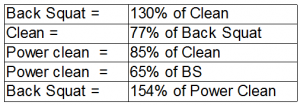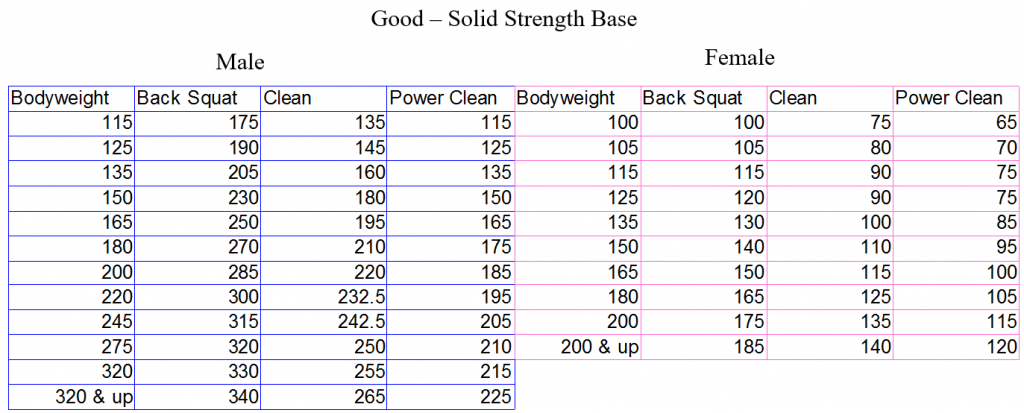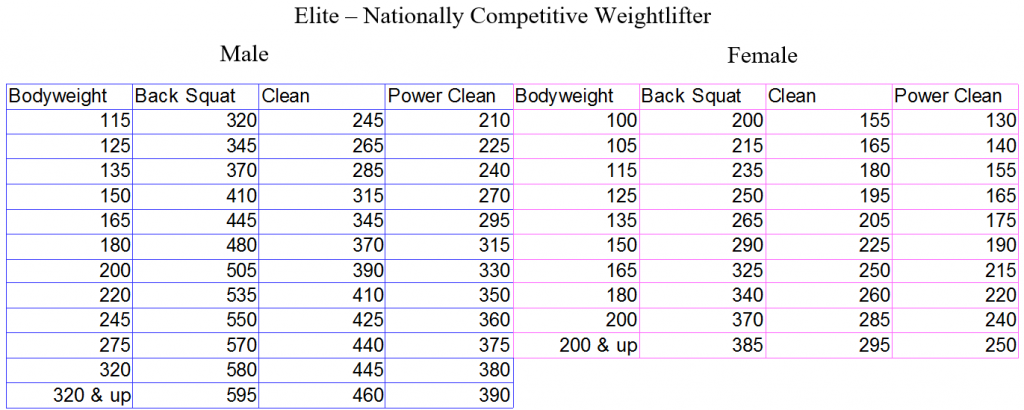
Over the past few years, we’ve seen an explosion of data in the field of strength and conditioning. We can now track and analyze more components of sports performance than ever before.
However, this process can be overwhelming. The hard part is often knowing where to being, let alone what to make of all the numbers and data that can be collected.
Today, I’d like to take a look at explosive power and show you how data science can be a tremendously powerful tool to improve your training, without being complicated.
When it comes to most sports, developing explosive power is absolutely critical. I’ve never met an athlete or coach who wishes they were LESS explosive.
But given all of the wonderful technological advances in training (accelerometers, force plates, etc.), where should you start? How do you improve?
Heck, how do you even know if you’re considered ‘explosive’ or not?
Well, I have good news my friends: breaking down explosive power can be very simple. No fancy tools required, just well-applied data science.
Don’t worry, I’ve done the hard work for you…
As a general outline, you should follow these three simple steps:
1) Evaluate your current level of explosive power
2) Identify your explosive power ratio
3) Train, track and compare
Before we get started, one thing that’s important to note is that everyone is different. Remember, it’s not data that makes decisions – its people. Data is meant to give insights to help YOU make better decisions.
Step 1: establish a baseline—How explosive are you?

Let’s start with one of the most basic yet effective tests to determine lower body explosive power: the vertical jump.
This simple test is used in numerous sports as a benchmark for explosive power for one reason: it actually correlates well to performance.
So, how do you know where you match up?
Here is the NSCA vertical jump table that shows the average vertical jumps for different categories of sport. Whether you are an athlete yourself or you’re coaching one, this table can be used to estimate where you stand relative to your goals.
For example, consider someone who has aspirations to be a Division I defensive back.
Looking at our table, we know that the average vertical for a D1 college defensive back is 31.5 inches. Let’s examine three cases of what you can learn from comparing your jump to this standard:
Case 1: The athlete has a 20 inch vertical. This is an immediate red flag. The athlete is well below the standard and should place a very high priority on developing greater explosive power to enhance performance.
Case 2: The athlete has a 31 inch vertical. This is a good start, but there is still some room for improvement. The athlete has a good degree of explosiveness that’s equal to the average of his group, so increasing explosiveness is still important but not as high of a priority.
Case 3: The athlete has a 40 inch vertical. This is excellent and gives good reason to look at other areas of performance that may need improvement. Chances are, explosiveness is not a weak point for this individual.
Step 2: The explosive power ratio—How do you improve?
Models help us understand the world around us and are what science and mathematics are all about. In our particular case, we are going to model the factors that comprise a vertical jump.
There are four main factors that drive jump performance. These can be modeled as:
Vertical Jump = Max strength + Rate of Force Development (RFD) + Genetics + Technique
While genetics and technique (this also includes components like coordination and balance) play a role in vertical jumping, the primary drivers are an athlete’s maximum strength and RFD.
This means that increasing maximum strength and rate of force development (RFD) will most likely give you the biggest bang for your buck in increasing explosive power.
You may be asking, “What is the difference between max strength and rate of force development?”
They are closely related, but maximum strength essentially governs the maximum amount of force you can produce during any explosive movement. This largely comes into play at the beginning of the movement, where the highest forces are produced.
This is because most cases require you to overcome inertia at the beginning of a movement, i.e. gravity, which requires a lot of force.
Once you’re moving and velocity increases, maximum strength becomes much less significant and rate of force development becomes more important in driving explosive power.
If you’re lacking in either or there isn’t the right balance between the two, your explosive power will suffer dramatically.
This means that the key thing to understand isn’t simply that you need both maximum strength and good rate of force development to maximize explosive power – you need these two qualities to fall within the right ratio.
This is what the explosive power ratio is all about…
In order to determine what this ratio is, I spent a ton of time digging into competitive Weightlifter research.
Why Weightlifters?
Simple. They are some of the most explosive athletes on the planet and they track their best lifts so there’s a ton of data to analyze and dig into!
I looked specifically at studies including the two key lifts that demonstrate maximum strength and rate of force development: the squat and the clean, respectively.
The beauty of using these two exercises is that they are simple to perform and monitor, and they require no special equipment. Any qualified strength and conditioning coach should be able to incorporate these into their athletes’ programs and most are already using them.

Photo courtesy of Hookgrip.
Digging into the research
During the Cold War era, the Soviets had a masterful sports science program consisting of a huge, state-sponsored athletics program that collected a ton of data.
For weightlifting in particular, researchers collected different personal bests among various skill groups and compared them to other exercises. These comparison charts can be seen in Laputin and Oleshko’s book, Managing the training of weightlifters.
What’s interesting about this data is that independent of body weight and skill level (class I to International Master of sport), the back squat seems to be invariably around 130% ± 5% of the athlete’s best clean.
Keep in mind that “clean” in this sense is referring to a full depth squat clean. If you are talking about a “power clean” (catching the bar above parallel), which is what most non-Weightlifters are doing, then you’re looking at the back squat being about 154% of the power clean.
These same basic percentages were also recently re-confirmed in Ben Cove’s Study at the 2015 world weightlifting championships. The results are summarized below:

So what does all this mean?
Well, it means that if you want to maximum explosive power, simply being strong isn’t enough. You need to achieve the right balance between maximum strength and rate of force development.
The data suggests that this balance is achieved by having an explosive power ratio of 1.5 – 1.6.
(Note: this ratio assumes you’re doing power cleans instead full cleans, like most athletes are. If you’re performing full cleans, simply add 0.2 to your explosive power ratio to compensate).
An explosive power ratio that is either too low or too high above that range tells you that you don’t have the correct balance between maximum strength and rate of force development.
Consequently, your explosive power isn’t nearly what it could be.
To determine your current explosive power ratio, simply take your maximum back squat (1RM) and divide it by your best power clean.
If you’re not doing 1RM testing, you estimate your 1RM with free calculators like this one.

![]() Exclusive Bonus: Click here now to download the explosive power cheat sheet and follow the simple three step formula
Exclusive Bonus: Click here now to download the explosive power cheat sheet and follow the simple three step formula
Let’s use this equation to calculate the explosive power ratio of two hypothetical athletes:
Example 1: Athlete A can squat 300lbs and power clean 200lbs. In this case, his or her EPR would be exactly 1.5 (300lbs / 200lbs)
Example 2: Athlete B can squat 400lbs, but only power clean 230lbs, producing an EPR of 1.74.
This would mean that Athlete B’s ratio is out of balance and developing more max strength isn’t the answer to improving explosive power.
Instead, Athlete B should focus on improving their rate of force development with explosive lifts and methods like ballistic training and plyometrics.
The chart below summarizes how to use the explosive power ratio to help guide your training:

The great thing about the explosive power ratio is that it gives you a clear roadmap of the type of training that will improve your explosive power the most.
Simply plug your 1RM, or projected 1RM, for the back squat and power clean into the equation and quickly find out if your ratio is within the right range—or if you need to focus your training on a specific area.
As you train and start to see improvements in your lifts, use the explosive power ratio to make sure you’re maintaining the proper balance of max strength and RFD.
Teaser: In future articles I’ll cover the data behind exactly what types of programs produce the fastest increases in strength, or rate of force development. I think the information will surprise you… but that’s a topic for another time.
Step 3: Track, train and compare—How do you stack up?
Now you have a gauge for explosive power and you know how to see where you fall on the explosive power ratio scale.
With this, you can see how you – or any athlete, for that matter – stack up against other athletes in terms of max strength and rate of force development.
Knowing this will help you track your progress over time and ensure you have both the right explosive power ratio and the overall levels of strength and rate of force development necessary to perform at the highest level.
I’ve developed different training standards for comparing components of explosive power using Mark Rippetoe’s starting strength standards, Greg Everett’s weightlifting classification system, and other observations.
It’s important to remember that these numbers should be used as rough guidelines and are only designed to give coaches and athletes a reference for where they stand compared to the best of the best.
The results are summarized in the charts below:



Summary
If you need to improve explosive power—and who doesn’t—the explosive power ratio is an invaluable tool to assess your own weaknesses or, if you’re a coach, to help develop the most effective program possible for your athletes.
To maximize explosive power, all you have to do is follow this three step process:
1) Perform a vertical jump test as a benchmark of explosive power
2) See where your EPR is by dividing your back squat by your power clean 1 RM’s
3) Compare against different standards [the good, excellent, or elite strength levels in the charts above] and track your progress over time
This 3 step process will allow you to quickly pinpoint specific weaknesses and even better, it will give you a roadmap to the shortest route to maximizing power
Data science is about application. It doesn’t always require expensive equipment or time consuming data analysis. Too often, we see people collecting a lot of data and doing little with it.
Instead, with the right approach, we can collect data from few simple tests and turn it into a powerful application. Remember, data is often what you make of it.
![]() Exclusive Bonus: Click here now to download the explosive power cheat sheet and follow the simple three step formula
Exclusive Bonus: Click here now to download the explosive power cheat sheet and follow the simple three step formula
